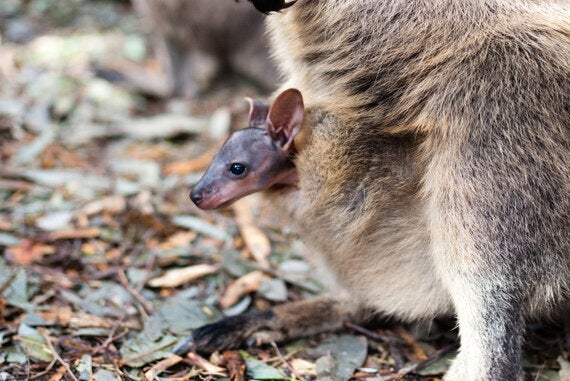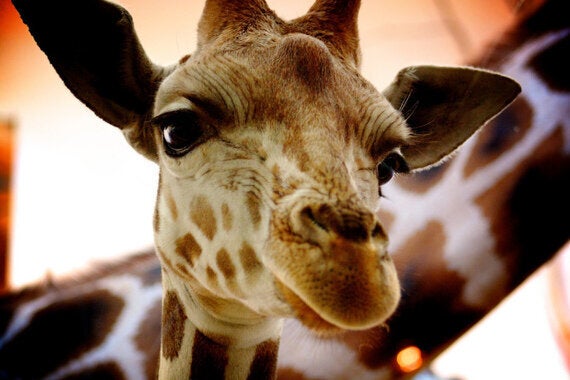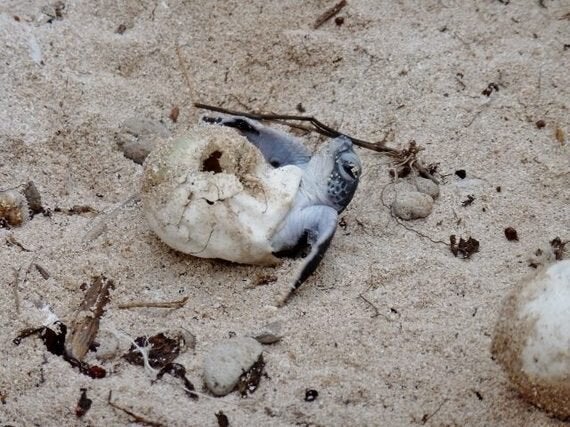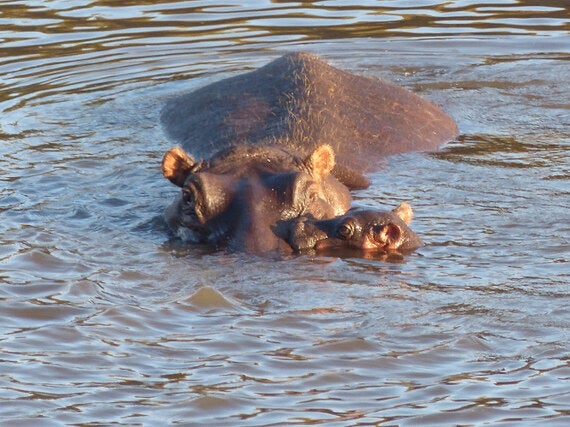'The greatest challenges any animal faces are within the first few hours/days when they are smallest and most vulnerable'- Sir David Attenborough. Many animals have instinctively adapted to their first experiences of the world, but some have it harder than most!
Gutsy Geese
Barnacle Geese are a species which I personally was taken aback by. If any of you have seen the new series called 'Life Story,' presented by Sir David Attenborough, then you know very well that this species in particular is one which leaves you utterly mesmerized. Check it out the video below.
A valley in Greenland is home to breeding pairs of these geese which nest upon 400 feet rocky cliffs; great for escaping predators. Only once the goslings hatch, do the parents put their new-borns into a moment of pure odds of survival to feed and start their lives with them; leaping off a 400 feet rocky cliff. Only if they judge it right and manage to hit the cliff edges stomach-first on the way down, they will perhaps remain conscious at the end of it! Only pure luck of a goslings' judgement in their jump will determine this species' survival.
Nature has given this species a fighting chance with this extraordinary test, allowing the breeding pair to produce enough offspring that is the maximum to which the pair can look after at once, but then also enough to give a good chance for at least a few to survive this ordeal- it may not seem it but it's been thought out.
Miraculous Marsupials

Image courtesy of Matt Chan
Ever wondered how young marsupials end up in their mother's pouches? Such species like Kangaroos and Koalas give birth to an embryo just only about 2cm in length; blind, bald and barely visible to the human eye unless you know what you are looking for. The new-borns' hind legs are just 'nubs' at this stage. They make a fascinating journey, taking around 3 minutes dragging themselves upwards about 6 inches using their forelimbs to climb up their mother's fur and into the pouch- incredible! In the pouch is where the embryo latches onto a nipple for 34 weeks once mature enough to face the world outside it.
Graceful 'Groundbreakers'

Image courtesy of Kyle Murphy
The tallest member of the animal kingdom is the notorious Giraffe. Bending down is often a struggle, evident when they drink; their legs splayed at a 45 degree angle -not looking very natural for such a tall mammal. Scientists have actually said that their circulatory system is specifically modified because of high pressure needed to pump blood up to its head. This therefore means that there is the potential for brain damage if lowered, and so they have elastic blood vessels to relieve this.
This makes sense then that Giraffes give birth standing up, but at that height what about the infant? Well, the new-born does fall from a height of about 3 metres but in actual fact the impact from the fall breaks the umbilical cord; an important adaptation in order for species alike (wildebeest, springbok and red deer) to be active after birth to escape predators. Giraffe new-borns are rarely injured from the fall, and are on their feet within an hour!
Seeking sea turtles

Image courtesy of Frontier's Greece Turtle Conservation Project
Sea turtle hatchlings are good indicators of climate change- whether they are male or female depends on the temperature of the sand. After an adult female lays her eggs, she returns to the sea leaving her hatchlings to develop on their own. The amount of time it takes the embryo to develop also depends upon various environmental conditions and also differs among turtle species.
The normal range of gestation is between 45 to 70 days before they begin to break out of their shells where they will then remain in the nest for a number of days, absorbing the yolk which is attached by an umbilical cord to their abdomen. They do this to provide enough energy for their journey to the sea.

Image courtesy of Frontier's Greece Turtle Conservation Project
These amazing little newborns use cues, normally at night to avoid being predated upon, to help them get to the offshore waters, including the slope of the beach, white crests of the waves, and the natural light of the ocean which reflects the moonlight. However, it's not all plain sailing as recent developments along beaches mean the newborns are likely to follow these lights instead and therefore end up being run over or become very dehydrated. Not only this, but they have a series of obstacles to tackle whilst on their journey to the sea: crabs, birds etc want to all have their share with a piece of a tasty sea turtle snack. You can see why only 1 in 1000 hatchlings make it to adulthood. This shows how important conservation techniques for this species in particular are.
What is Frontier doing to help? Turtle conservation is carried out in Costa Rica by both volunteers and staff members from Frontier, whereby hatchlings are given a fighting chance of making it to the sea; hatchlings are either protected in their nesting sites or the eggs are taken in and once hatched are then observed whilst making their journey toward the sea. This includes monitoring the frequency and health of local nesting turtle populations and managing nest relocations to associated hatcheries. More information and publications on this can be found at www.frontier.ac.uk .
Half a minute help

Image courtesy of Cybergate9
Hippos can give birth on land or in water but either way there are consequences. Hippos tend to give birth more often in water- away from predators on land and less effort for the female. However male hippos will only attack the offspring whilst they are in water not on land; a risk the mother has to take. It is not understood while adult males only attack young hippos in the water but it is suggested that this is because young male hippos may be seen as a potential threat. Also mating occurs in the water, therefore the removal of a new-born allows the mother to become in oestrous again so the male can start a brood of his own (just like many others: lions, tigers and gorillas).
Hippo new-borns have an eight month gestation period and once born they know instinctively how to move in water. Remarkably, new-borns can only hold their breath for half a minute at a time therefore the mother pushes the new-born to the surface in order for it to breathe, and other times it rests on its mothers back when the water is too deep.
How do they feed underwater? New-borns feed exactly the same as they do on land, and have adapted to suckle underwater by taking a deep breath, closing their nostrils and ears and then wrap their tongue tightly around their mother's teat.
Keep your eye out for more extraordinary new-borns here in the up and coming months!
Check out Frontier's blog 'Into the Wild' where you can read more articles like this!
